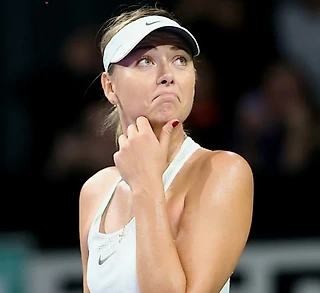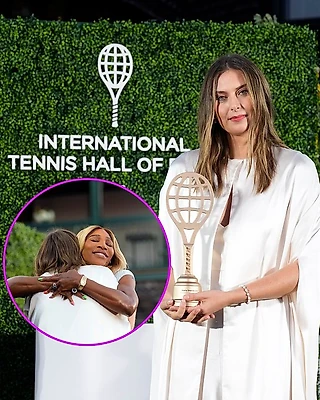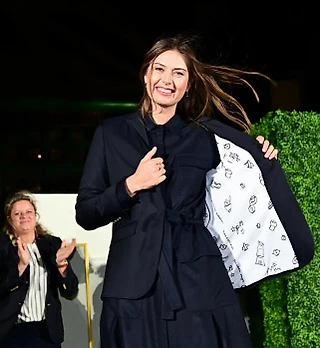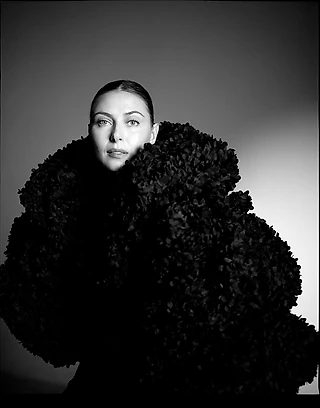Barely Legal: The problem that existed before Sharapova tested positive
Хорошая статья. Ставит важные вопросы. Слишком много место для Рафы и Энди, но остальной текст компенсирует.
FRIDAY, MARCH 11, 2016 /by KAMAKSHI TANDON
INDIAN WELLS, Calif—There's a court of law, and there's a court of opinion. As Maria Sharapova's doping controversy circled around Indian Wells for another day, it increasingly began to divide along these two tracks.
As far as the rules are concerned, it's quite simple. Sharapova was doing nothing wrong before this year, because the drug she was taking, meldonium, wasn't banned. But as soon as it became prohibited, she was doing something wrong, even though what she was doing hadn't changed.
But as far as public perception goes, it's more complicated. She said she was prescribed the drug for health reasons and was taking it for years. If it could enhance her performance, then she might have gotten an unfair advantage, even if at the time it was within the rules. And if, contrary to her claims, she was taking it in order to enhance her performance, there are many who would say she was doing something wrong even before the drug was prohibited. (And if neither applies, she might not have done anything wrong, regardless of the rule.) The way it’s seen is what will affect her long-term reputation.
This distinction between breaking the rules and cheating—and the question of whether one can exist independent of the other—was an interesting one to run by Sharapova's fellow competitors. It was hard to tell if they would say that Sharapova could do what she wanted as long as it was legal, or if they resented that she might have gotten a dubious edge against them.
First of all, they usually didn't want to answer the question. Secondly, they usually didn't know what they wanted to say, and following some hemming and hawing, tend to go with an “if it's legal it's legal” stance.
Even Belinda Bencic, who fell to Sharapova at the Australian Open—the tournament where she tested positive—was reluctant to object.
"It wasn't banned, so I don't want to comment on that," she said.
Asked specifically about their fourth-round meeting at the Australian Open, Bencic opened her eyes a little wider.
"I don't want to comment on that,” she said. “...I don't think it made any difference."
The others were equally wary.
"I cannot comment on this," said Simona Halep.
"I'm not a doctor," said Agnieszka Radwanska.
"It was legal, so ... Actually, I was not thinking about this right now," said Angelique Kerber.
"I know there is a list ... It's just what the paper says," said Garbine Muguruza.
"It's tough to say anything if it's not on the list," said Stan Wawrinka.
Laura Robson said she didn't know what everyone else was taking, and added "It's none of my business."
Tomas Berdych, however, leaned the other way, saying that he didn't like the idea of taking such substances for reasons other than health issues.
"Me, personally, I wouldn't have a good night's sleep," he admitted.
But it was Andy Murray who took a definite stand against it.
"I think taking a prescription drug that you don’t necessarily need, but just because it’s legal, that’s wrong, clearly,” the world No. 2 said. “That’s wrong. If you’re taking a prescription drug and you’re not using it for what that drug was meant for, then you don’t need it. So you’re just using it for the performance-enhancing benefits that drug is giving you. And I don’t think that that’s right."
Murray and Sharapova share a racquet sponsor, and he even criticized the company, Head, for announcing that it would extend its contract with her. Three other Sharapova sponsors have suspended or stopped their relationship with the five-time Grand Slam champion.
"I personally wouldn't have responded like that," Murray said in regard to Head’s decision.
As divided as the opinions are, not a lot has been established yet— things could still go either way, both in a court of law and the court of opinion. One of the reasons there is suspicion about meldonium is because its blood-flow boosting properties seem to improve endurance like other banned performance enhancers, and a lot of athletes seem to be using what otherwise seems like an obscure and specialized drug, particularly in Russia and neighboring countries.
On the other hand, meldonium's performance-enhancing value has been questioned, and its use in these countries could be perceived as no more remarkable than compression socks.
A lot will depend on what Sharapova shows at the hearing. If she declared it on her doping forms, it will indicate she wasn't hiding her use. If she can establish a pattern of low dosage and intermittent use—perhaps even using some of the testing done on her in the previous season, while it was being monitored—it will suggest that she wasn't taking it for performance-enhancing reasons. If she has reputable medical records that track improvement of her symptoms, and can provide some sort of cultural or other explanation for why that drug was chosen instead of others, that will also help—particularly if she attempts to get the retroactive Therapeutic Use Exemption (TUE) that could potentially wipe this away.
On the other hand, if the testing shows she had a high amount of the drug in her system and there's not a lot to back up her use, she'll look less credible. There's also quite a bit of pressure on the International Tennis Federation, which has been scrutinized for its running of the anti-doping program. While an independent tribunal will make the decision, the ITF will be the one prosecuting Sharapova. Strictly, all it has to do is show she tested positive—it's the player's responsibility to explain the rest. But there will be calls for it to mount an active and powerful argument against her. No TUEs, please.
From there, it will be a question of the rules. A maximum four-year suspension can get reduced to two years if she can show that she didn't break the rule intentionally. That might not be too difficult, especially since players only have to show that something was more likely than not (i.e. “on a balance of probabilities”). It's tough to imagine someone as professional and well-staffed as Sharapova making a mistake like that, but it's also tough to imagine that she knew the substance had been banned and kept taking it anyway—and at a Grand Slam, no less, where testing is almost definite.
"I doubt she would gamble her whole career away for something quite insignificant [when it comes to enhancing performance]," one player put it.
The two years can also be reduced to one year if Sharapova can show that there was no significant fault or negligence—that will be tougher given all the announcements about the change, and her own story about not clicking the link on the email. But if she had a good system in place, there might be some opportunity. It also sounds like she'll say that the drug having two names was partly to blame, though both names were used in announcing the change.
One of the less publicized grounds for a reduction is promptly admitting the violation, and she definitely checked that box.
But coming back to the issue of perception, Sharapova’s positive test does highlight that gray area on the edge of legality. Obviously, it illustrates the difficulties in deciding which drugs should or shouldn’t be banned. It's difficult to say what crosses the line into unfair advantage, both for the public and the players who want to be the best they can.
Marin Cilic was recently at the center of one of the most prominent positive doping tests. He said he ingested a banned substance that was mistakenly bought as a glucose tablet. (Their names were similar in the foreign language where it was purchased.) But what got less attention was that it revealed Cilic was using the glucose to take creatine, a legal but controversial substance that is said to help with muscle building. It's tough to tell the amount of players that might use such supplements—practically everyone questioned in press conferences at Indian Wells said they don't take anything, or only one or two basics. Players have been frequently cautioned about supplements, particularly because of contamination.
Meanwhile, those with access to machine equipment routinely use it, and it sometimes consumes hours at a time. It's usually not seen as controversial.
Perhaps no current player has been tried in the court of opinion as much as Rafael Nadal when it comes to doping. Like the others, he was also asked about Sharapova in his pre-tournament interviews at Indian Wells. When the question of prohibited methods was raised generally, he took it like a forehand down the line.
"I heard a few times," he said of the doping accusations which keep coming in. "I am a little bit tired [of it.] … I am [a] very clean guy … I believe in the sport and the values of the sport … It is an example for the kids, and if I am doing something that goes against that, I will be lying to myself, not lying to my opponents."
But Nadal has also seen questions raised about the legal, innovative techniques he’s used for his injured knees, like platelet-rich plasma and stem-cell therapy. He insisted that didn't bother him.
"The questions are good, and it's good to have the right questions," he said.
But there was a definite hint of frustration.
"I have been open all my career," he said. "I never tried to hide nothing that I did. I did PRP and then I did stem cells … The first time with PRP it worked fantastic, and the second time it was bad. I had to stop playing tennis for seven months … With stem cells, I used it two times on my knees and it worked very well … I am not doing, never did, and [am] never going to do something wrong."
By the rules, he has not. By any other standard, though, he can be subjected to all kinds of things.
That's one of the best arguments for the if-it's-legal-it's-legal position—because if that line is not used, another must be found instead.
And as Sharapova has shown, wherever the line is, it's possible to trip on it.
>
Просмотров всех постов блога на эту неделю:
Просмотров всех постов блога в марте 2016 года:
















